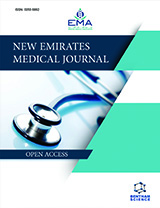Abstract
Background: Human papillomavirus (HPV) infection is a major cause of cervical cancer and premalignant dysplasia. The prevalence and distribution of different high-risk HPV genotypes can affect HPV vaccination strategies and the design of cervical cancer prevention programs.
Objective: Here, we aimed to determine the prevalence of different HPV genotypes in women with abnormal Cervical cytology in the United Arab Emirates (UAE), evaluate correlations between HPV genotypes and the degree of cervical dysplasia, and observe distributions of HPV genotypes across age groups.
Methods: The study included 442 women who underwent HPV genotyping at our institution between January 2018 and September 2019. A retrospective chart review was conducted for all 442 cases, and data were collected from hospital records.
Results: The overall HPV positivity rate was 56.1%. The prevalence of high-risk HPV was 48%; 35.4% of patients had multiple high-risk HPV strains, whereas 64.6% had a single high-risk HPV strain. The most common high-risk HPV genotype was HPV-16 (15.2%), followed by HPV-31 (11.7%), HPV-53 (8.9%), HPV-66 (8.6%), and HPV-51 (8.3%). The prevalence of HPV-18 was only 3.8%. The high-risk HPV positivity rate Increased from 39% in women with Atypical Squamous Cells of Undetermined Significance (ASCUS) to 81% in women with Low-grade Squamous Intraepithelial Lesions (LSILs), 81.3% in women with atypical squamous cells cannot rule out High-Frade Lesions, and 80% in women with High-Grade Squamous Intraepithelial Lesions (HSILs). The multiple high-risk HPV strain positivity rate increased from 32.4% in ASCUS to 44.7% in LSIL and 62.5% in HSIL. Increased HPV positivity rates and prevalence of HPV-16 were noted with increasing severity of cervical dysplasia. Decreased HPV positivity was observed with increasing age.
Conclusion: Overall, because the prevalence and distribution of different high-risk HPV genotypes affect HPV vaccination strategies, our findings may be useful for the design of cervical cancer prevention programs.
Keywords: Human papilloma virus, Cervical cytology, Genotype, Cancer vaccine, Cervical dysplasia, Cervical cancer. Article






























